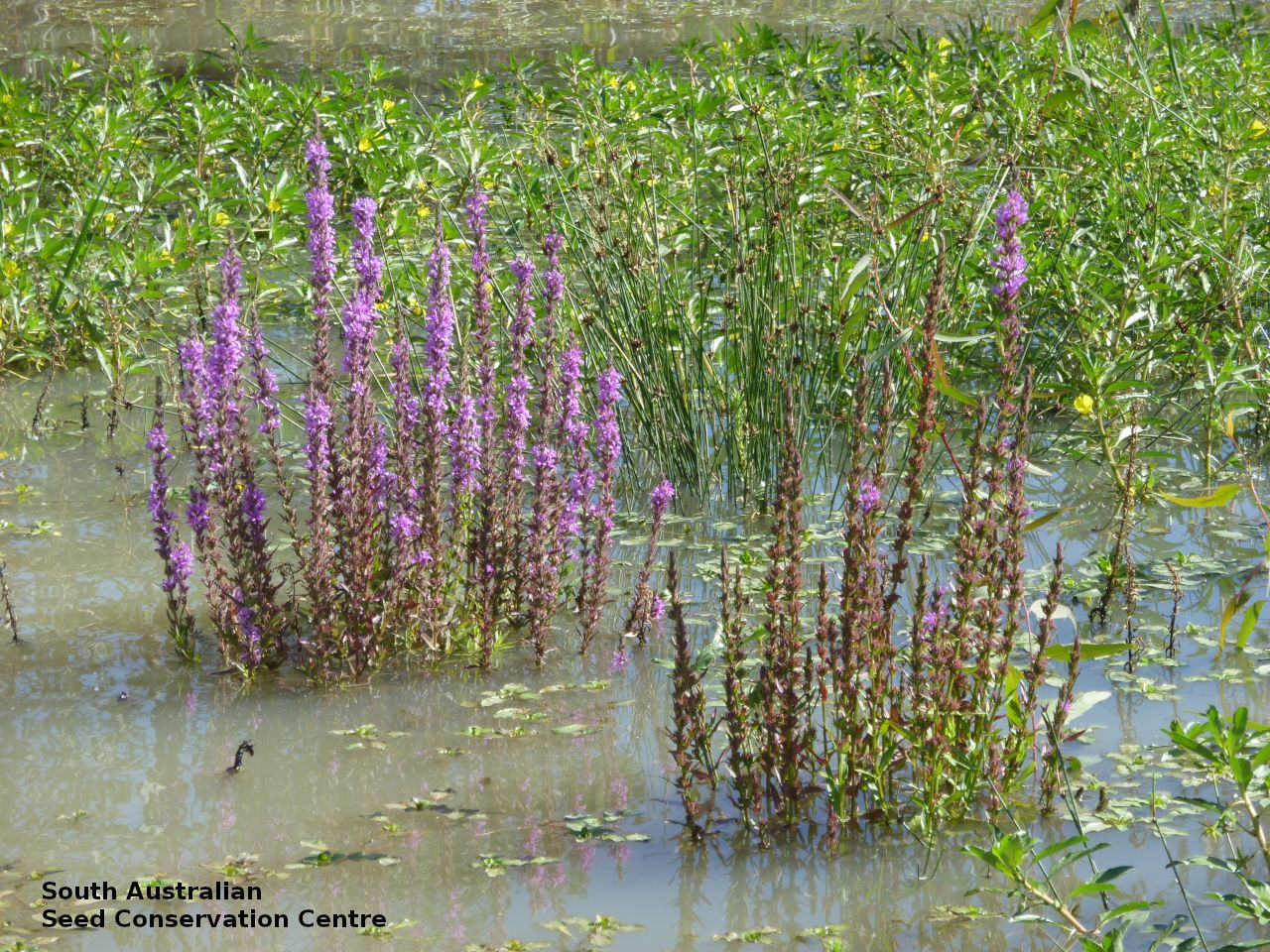

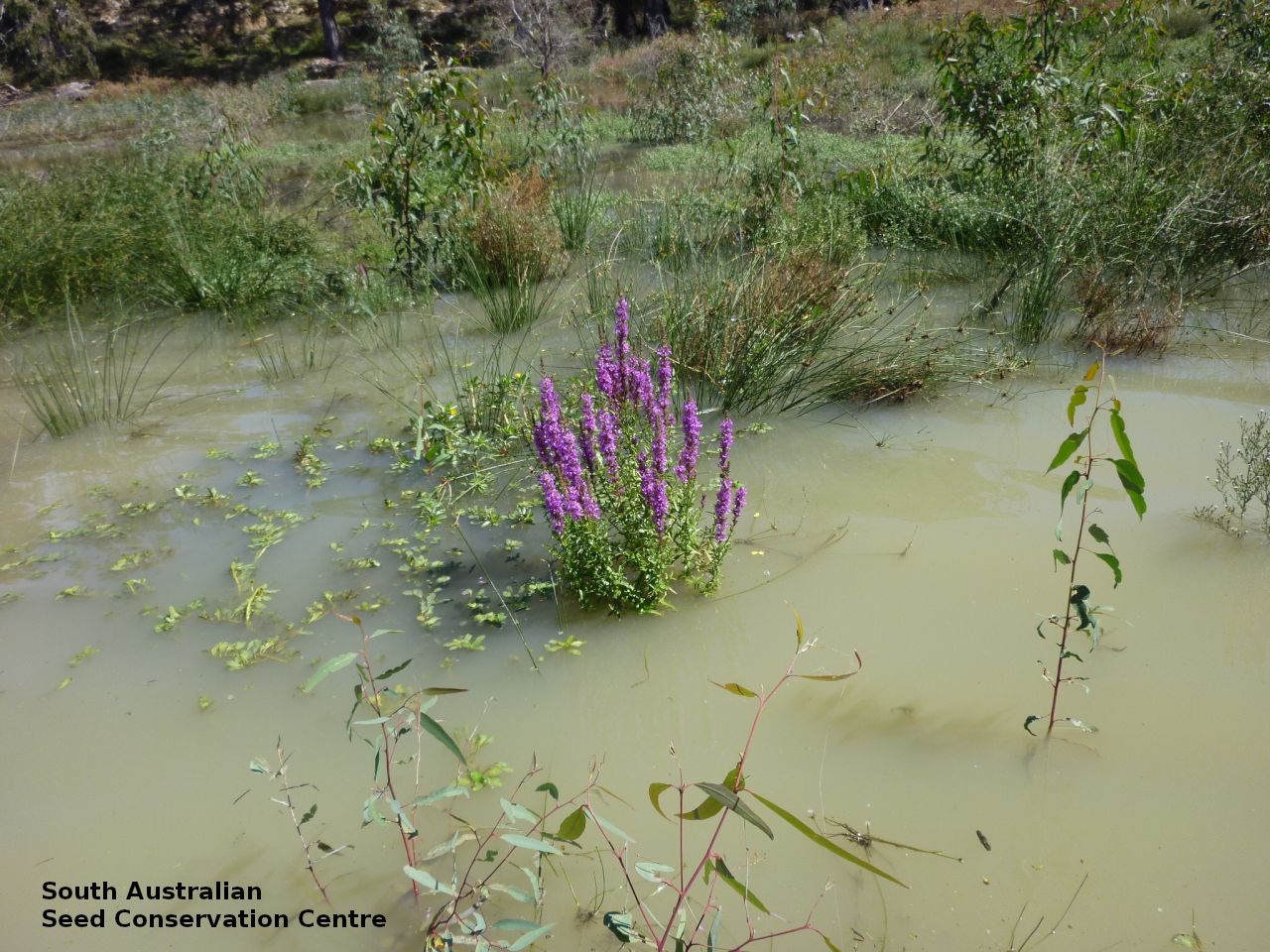
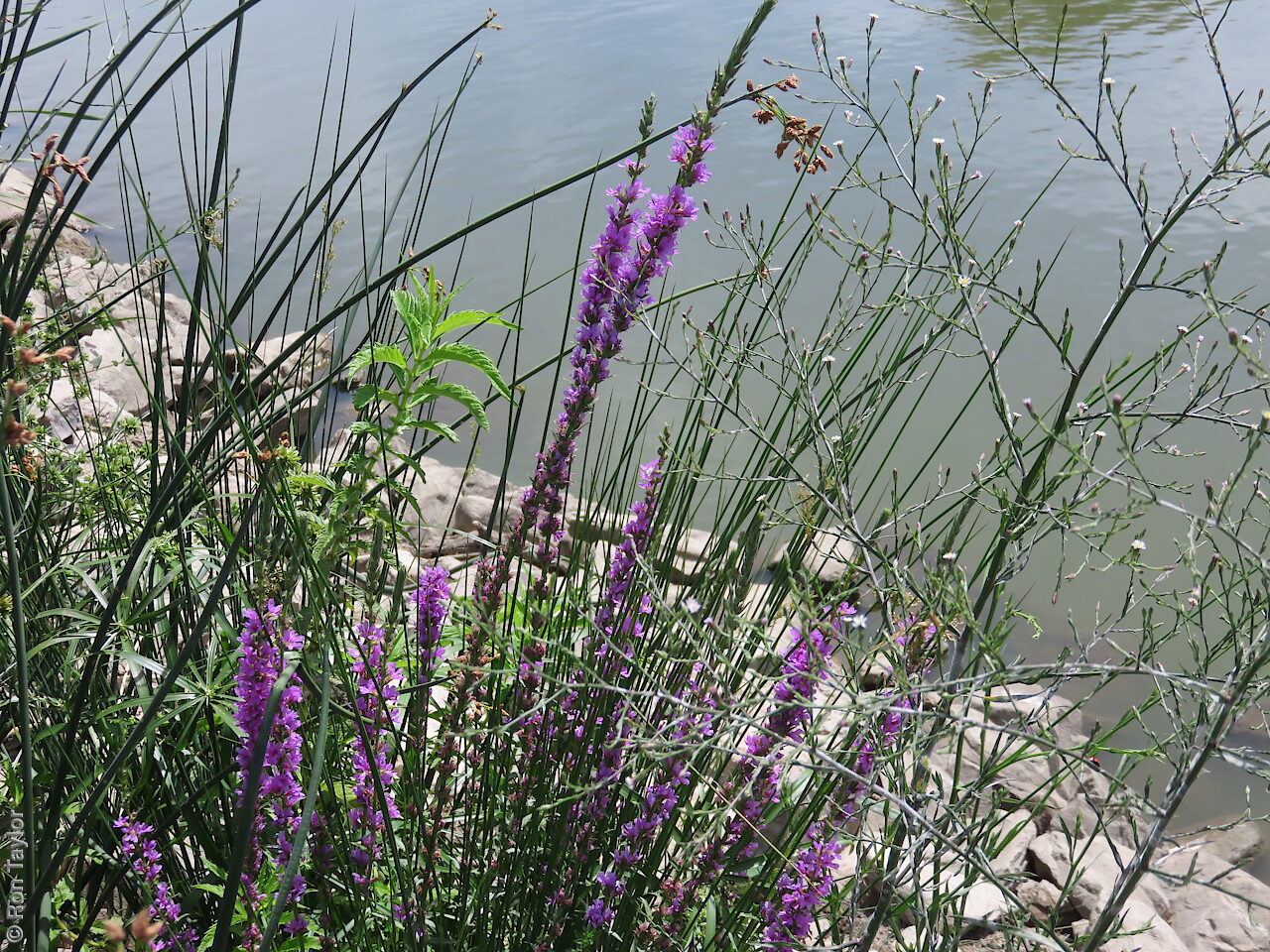
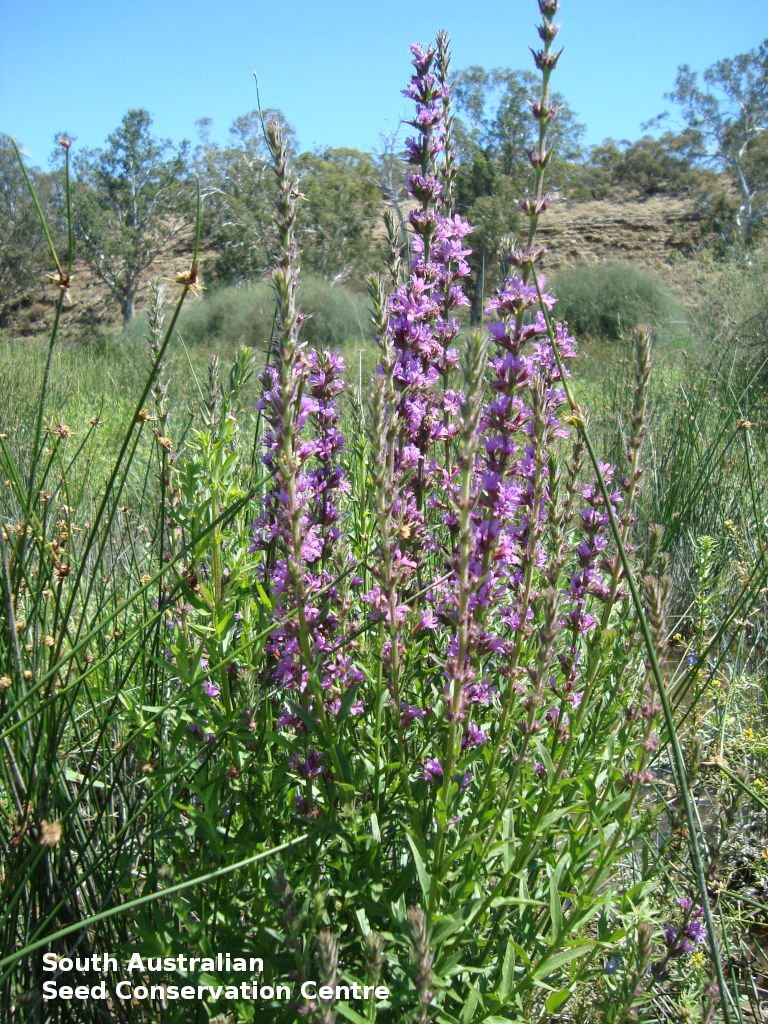
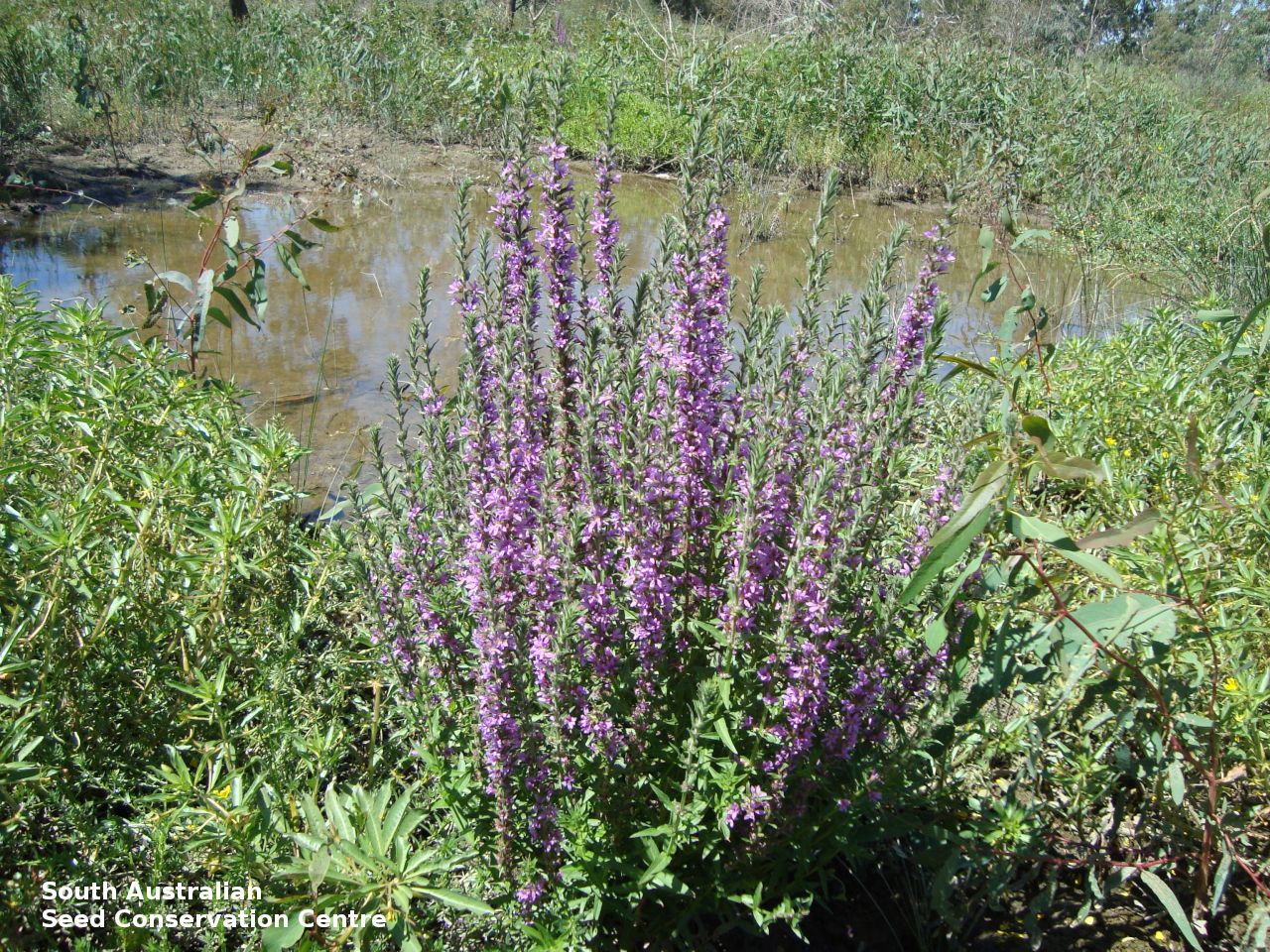
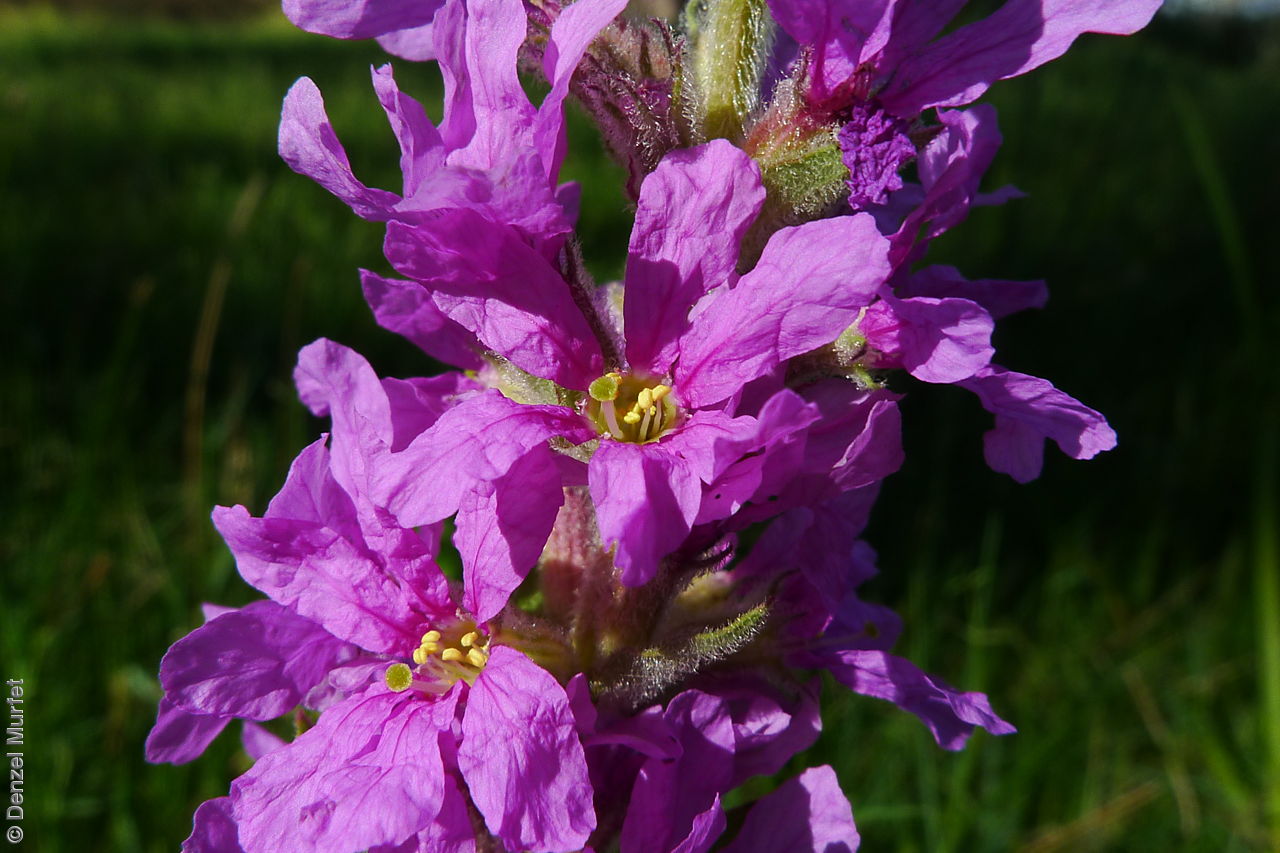
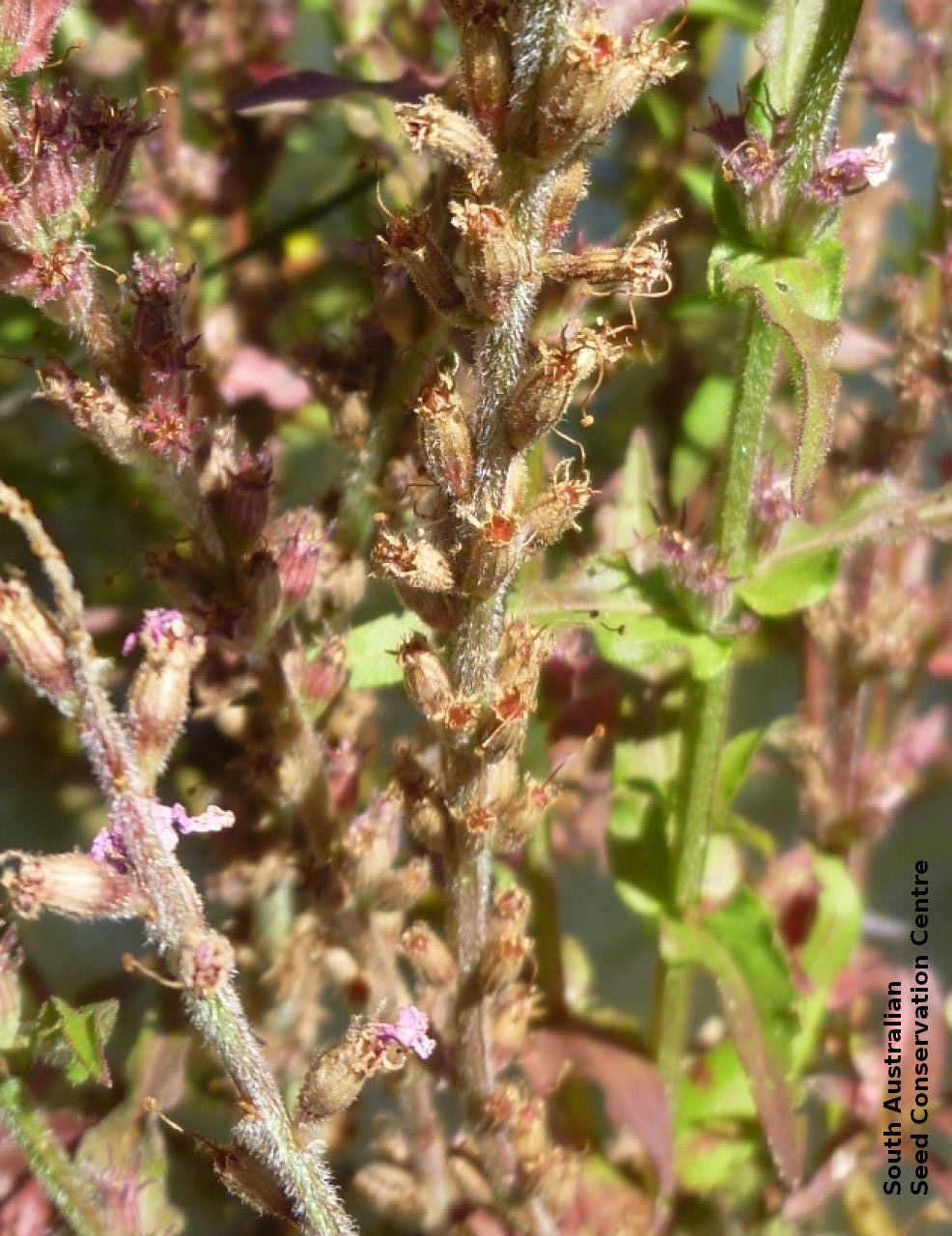
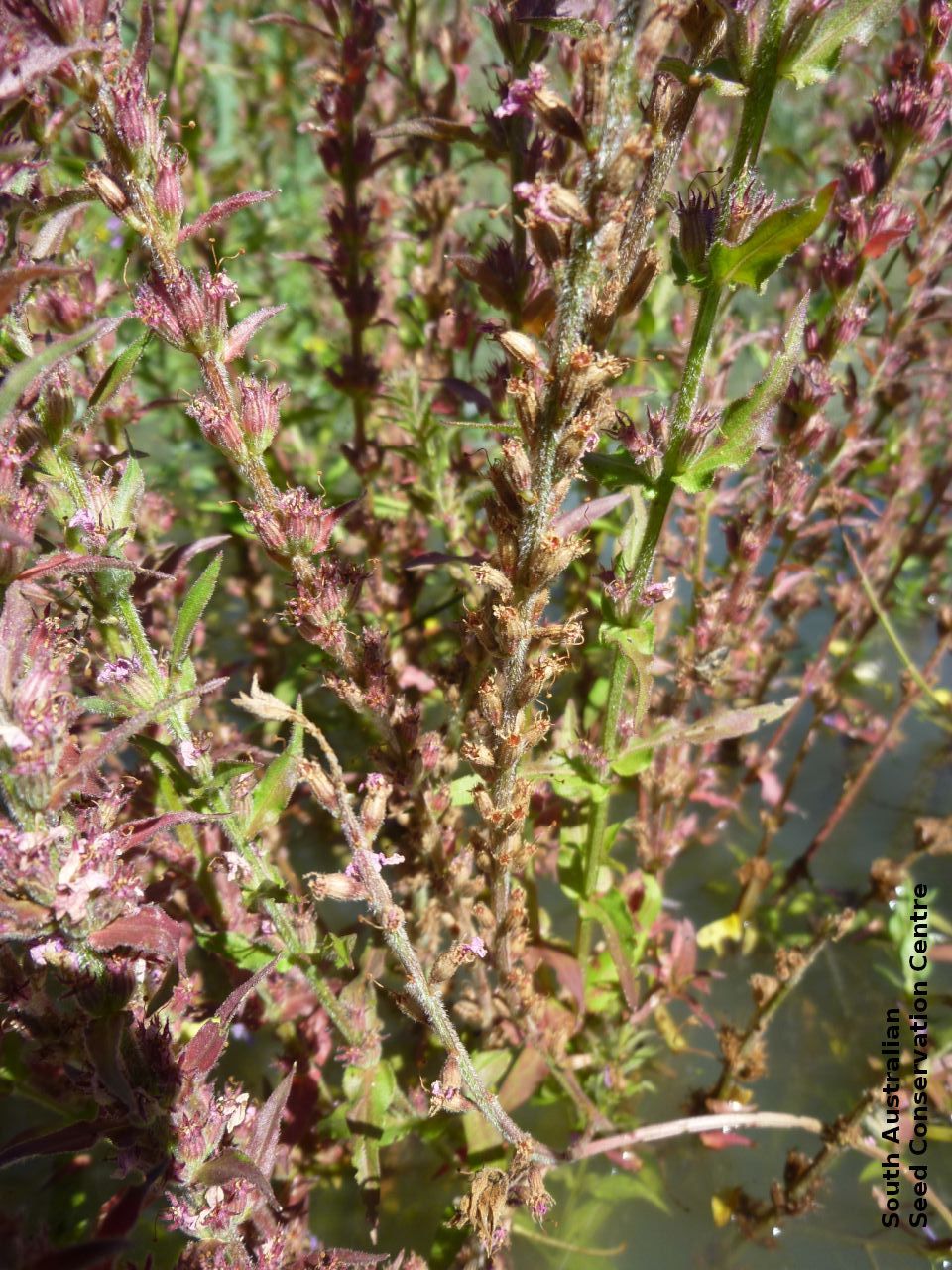
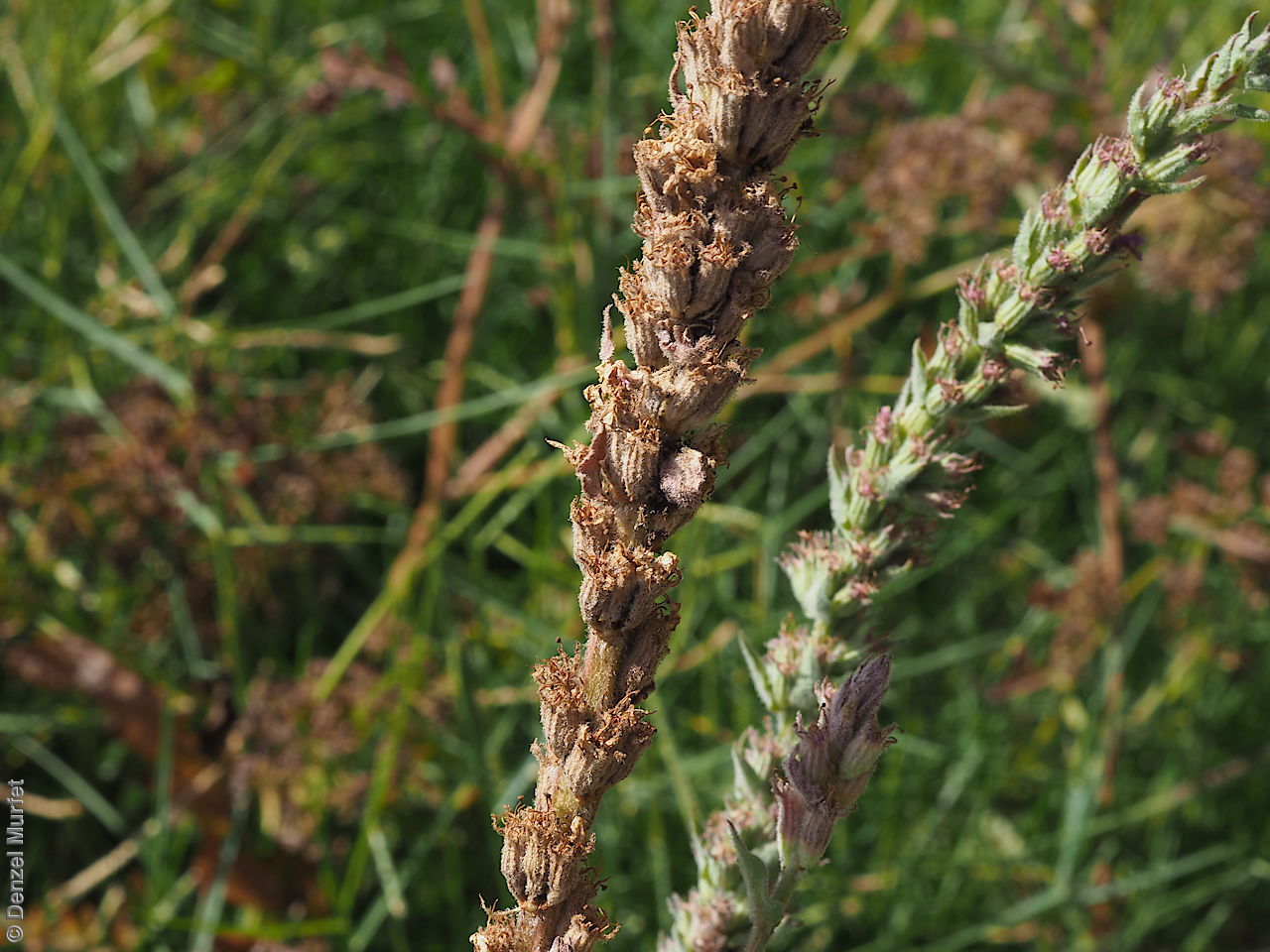
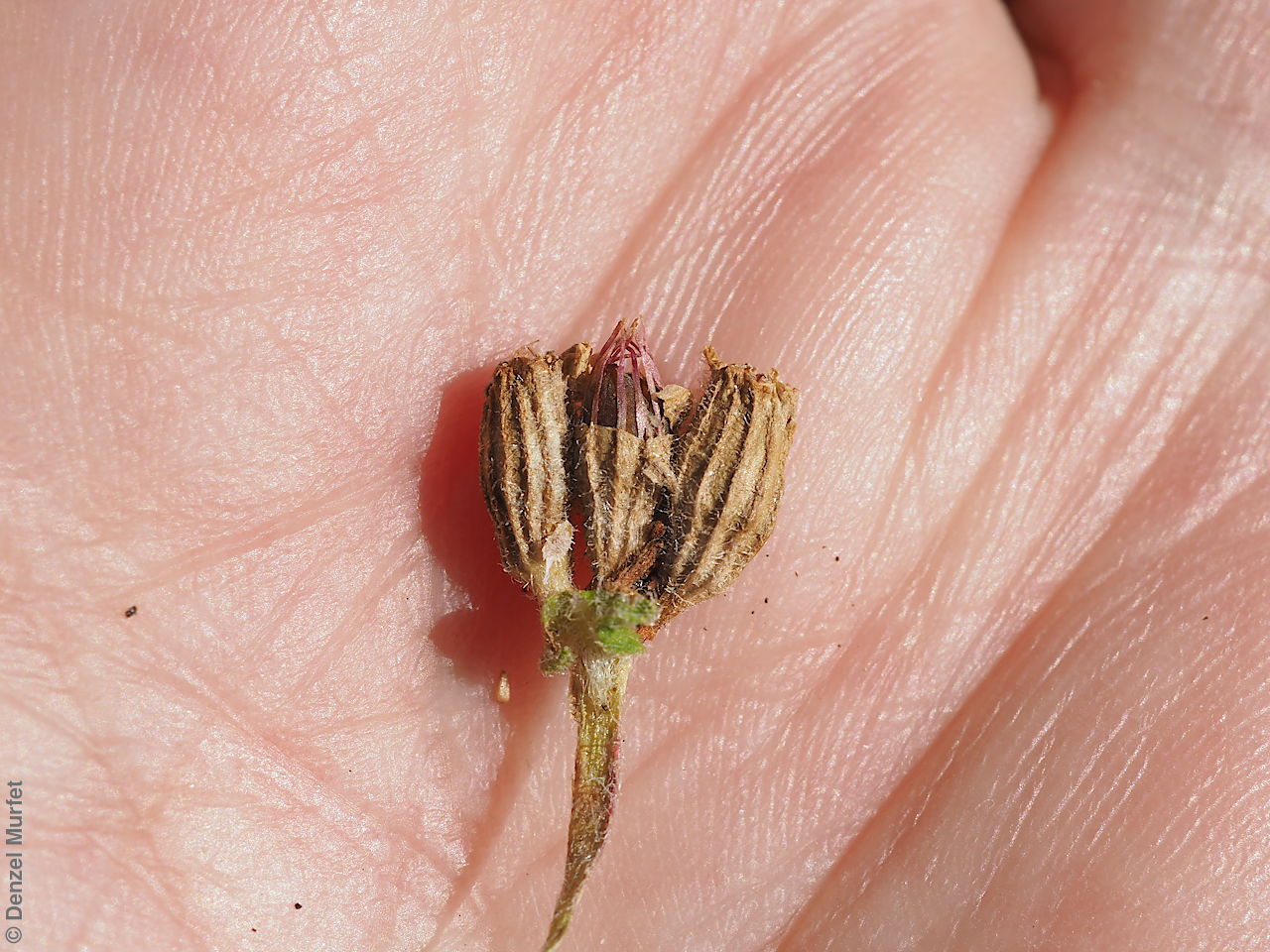

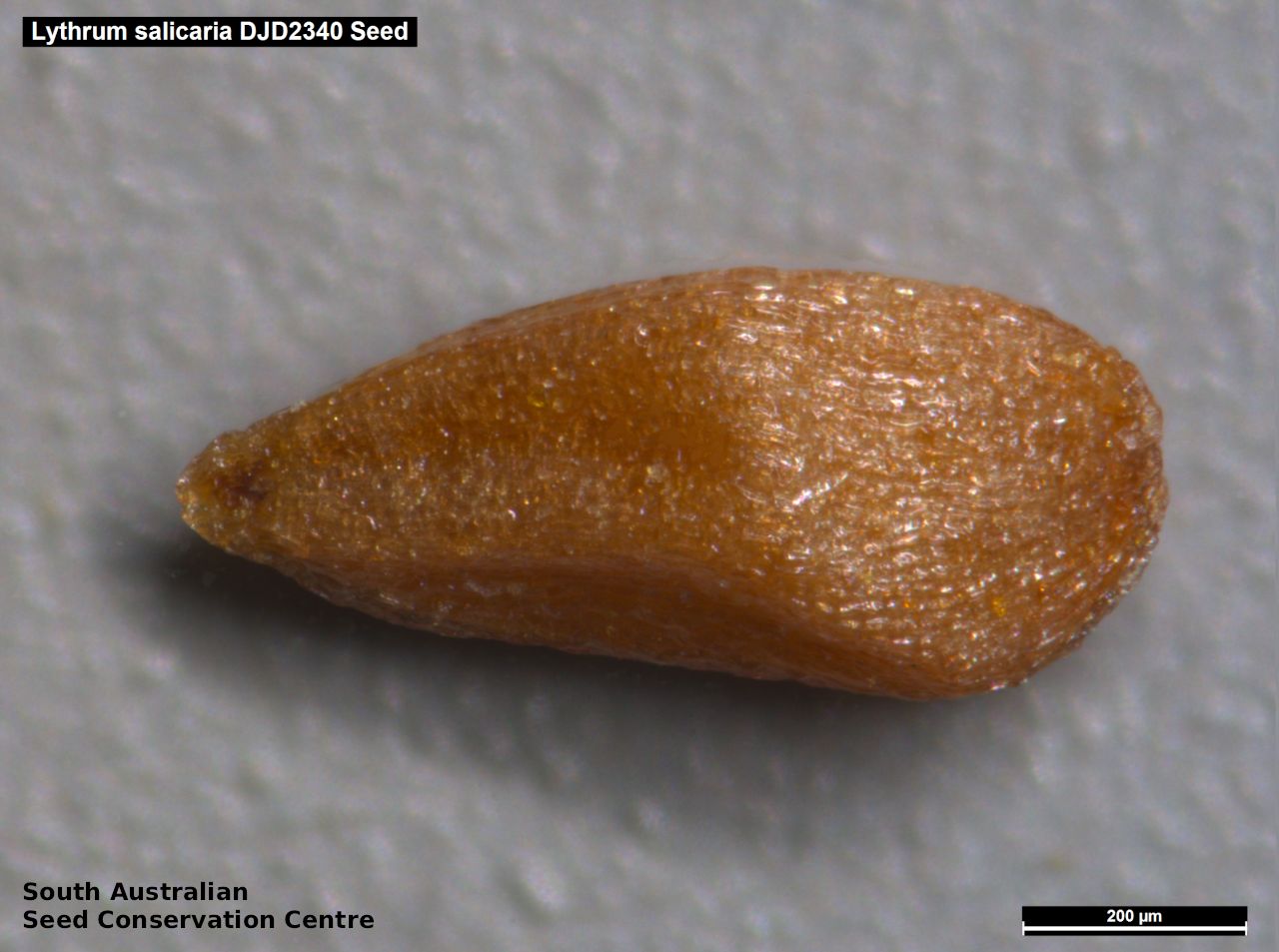
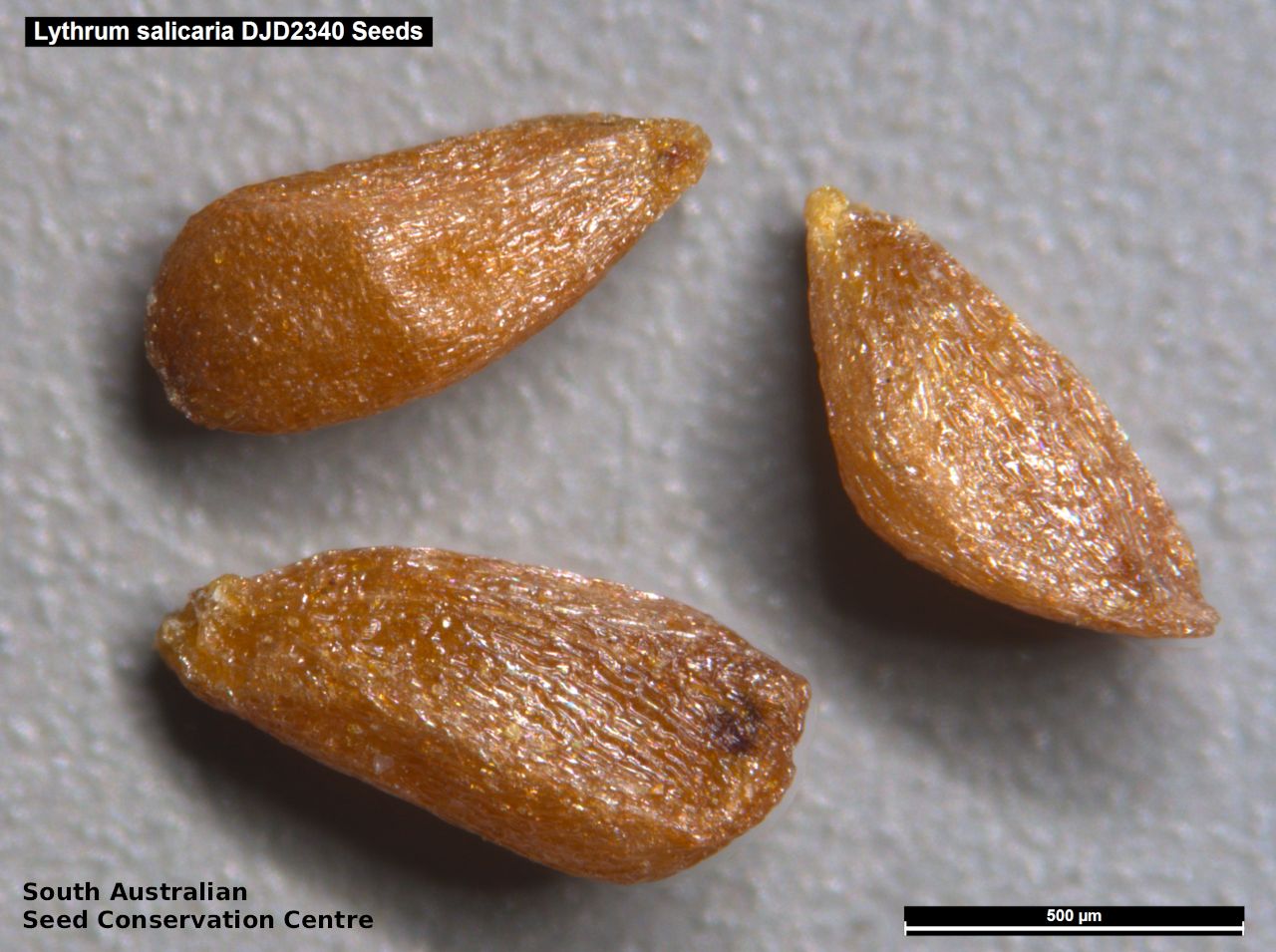
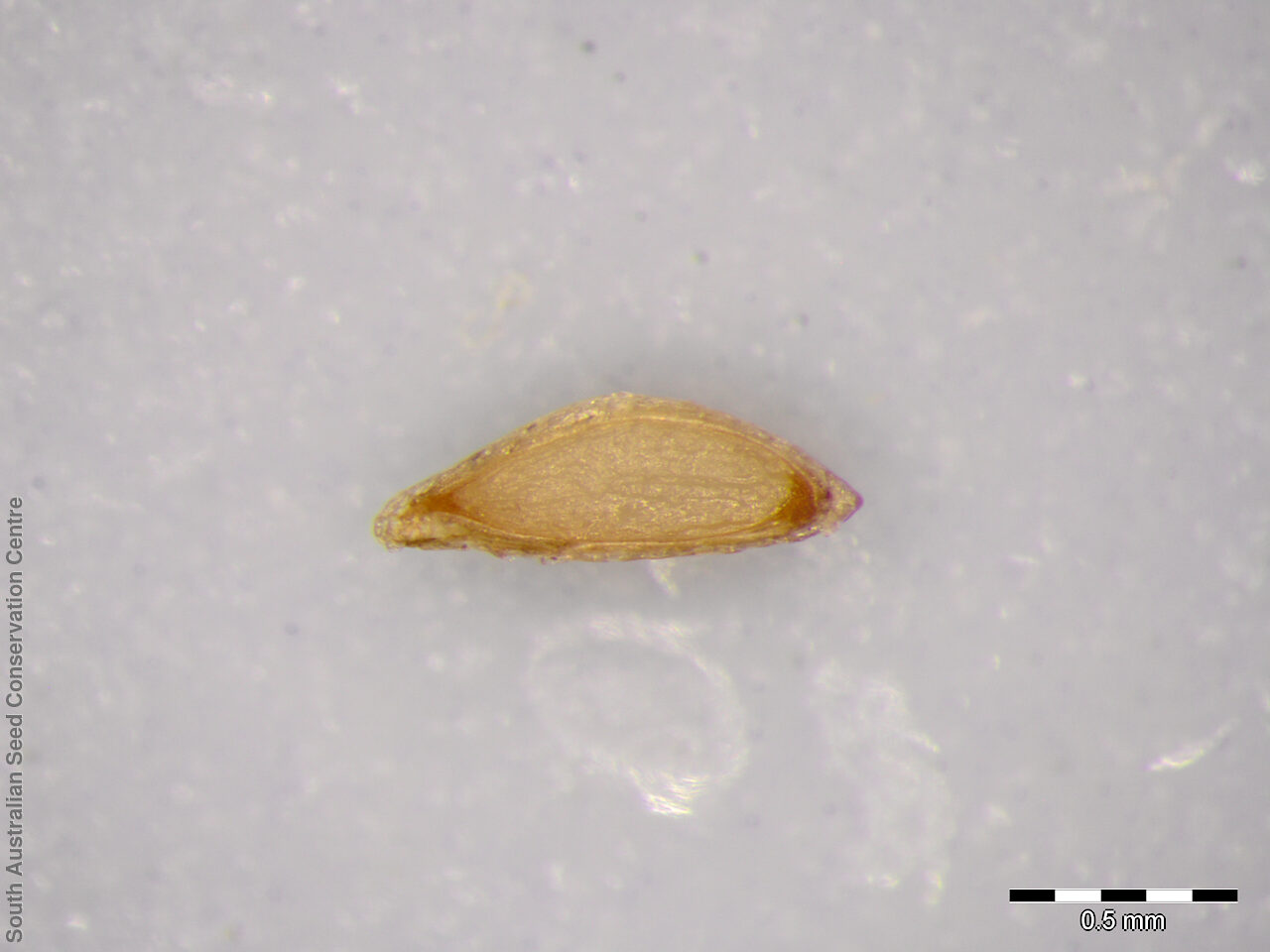
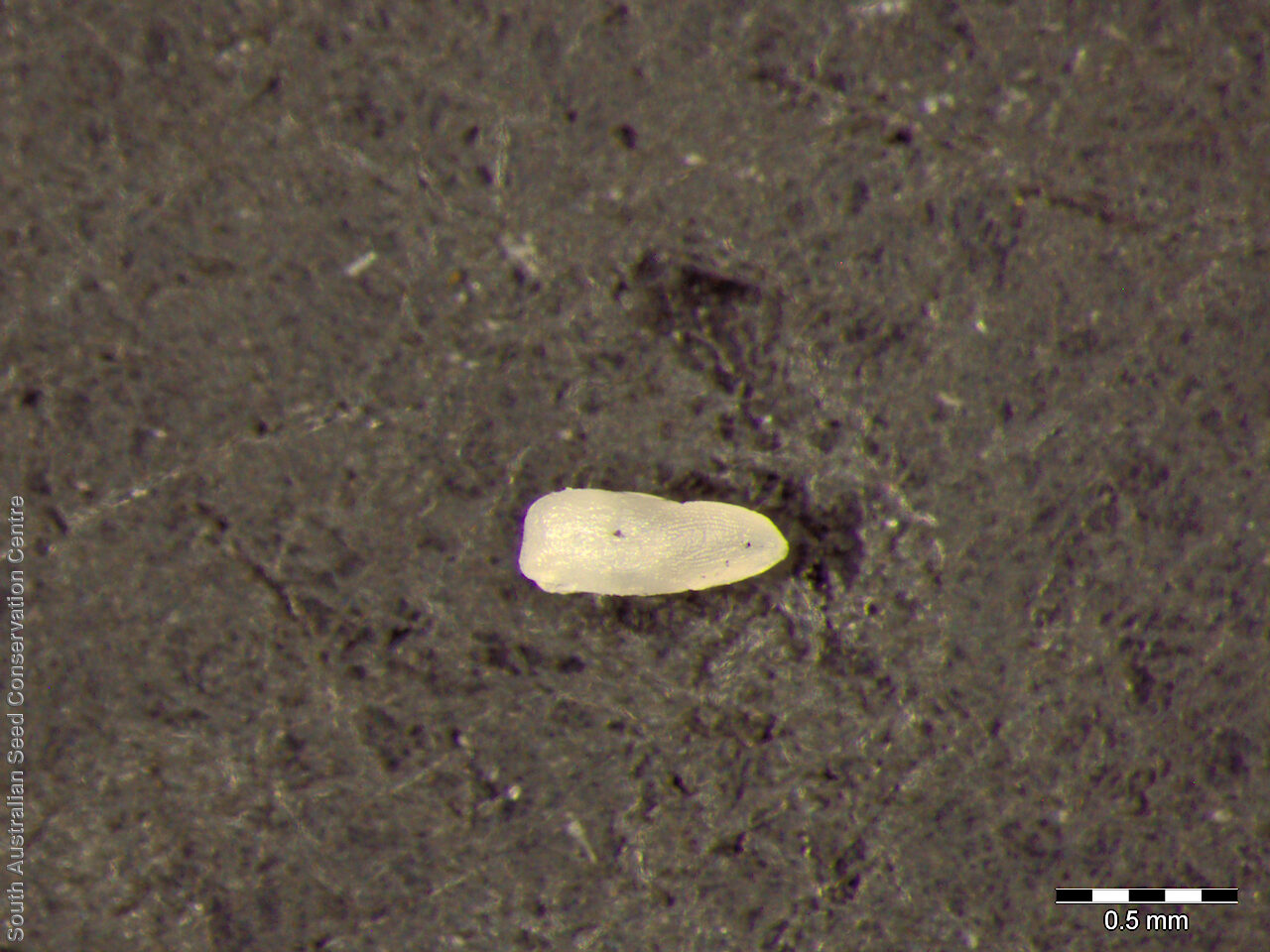
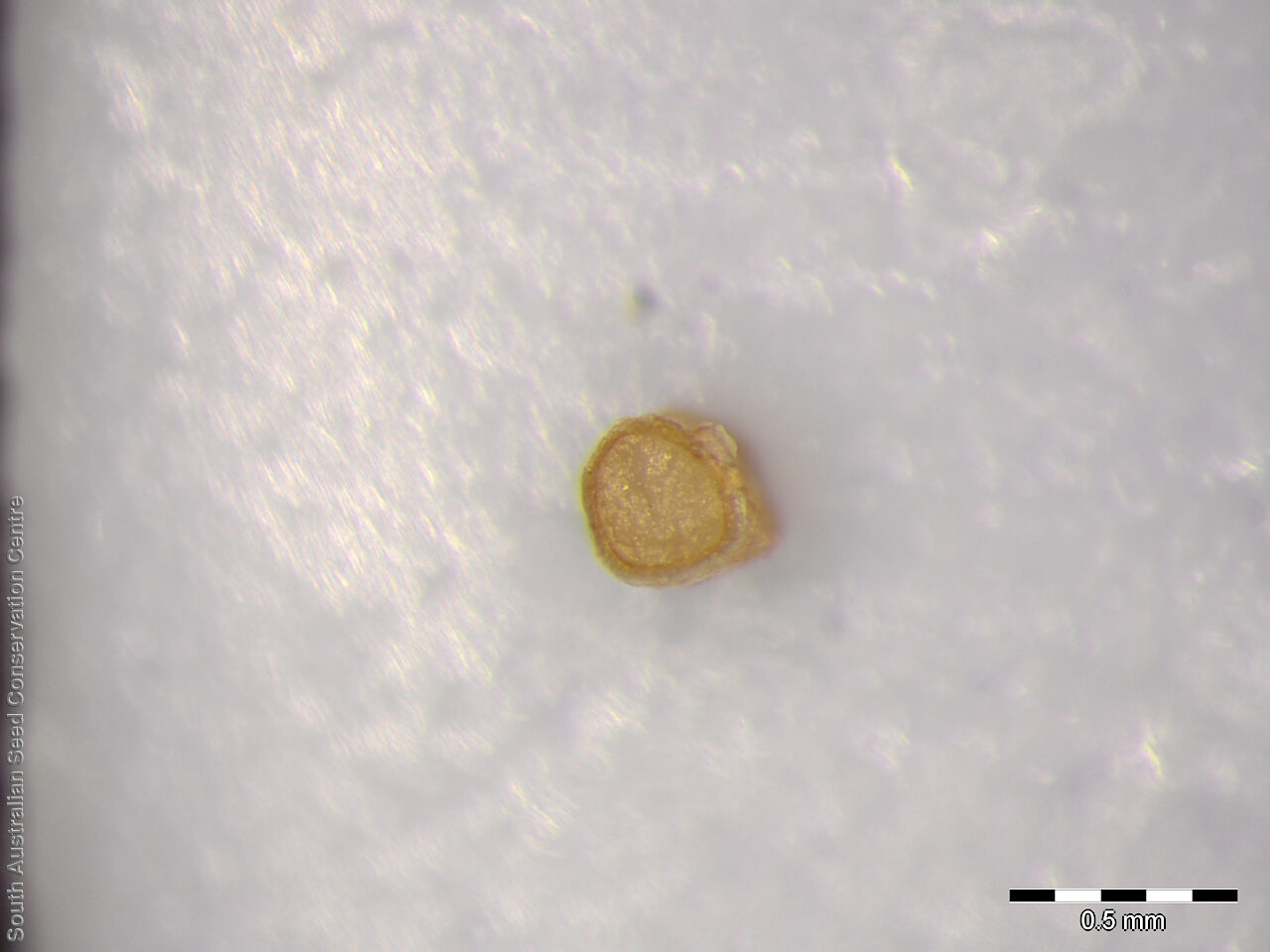
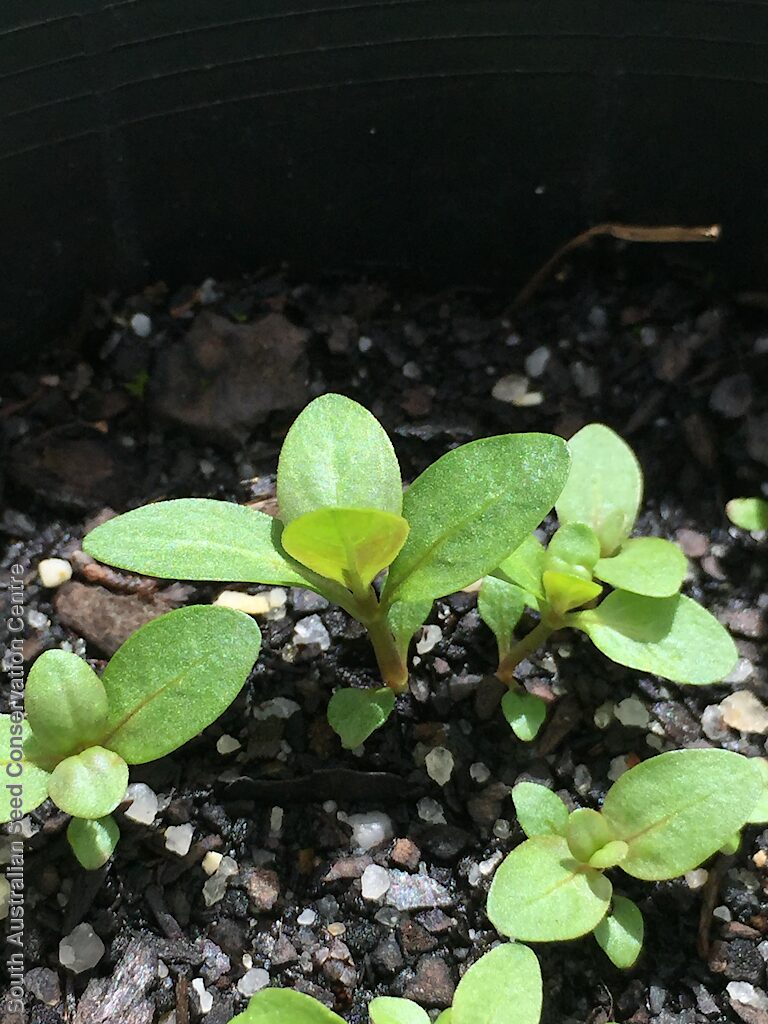

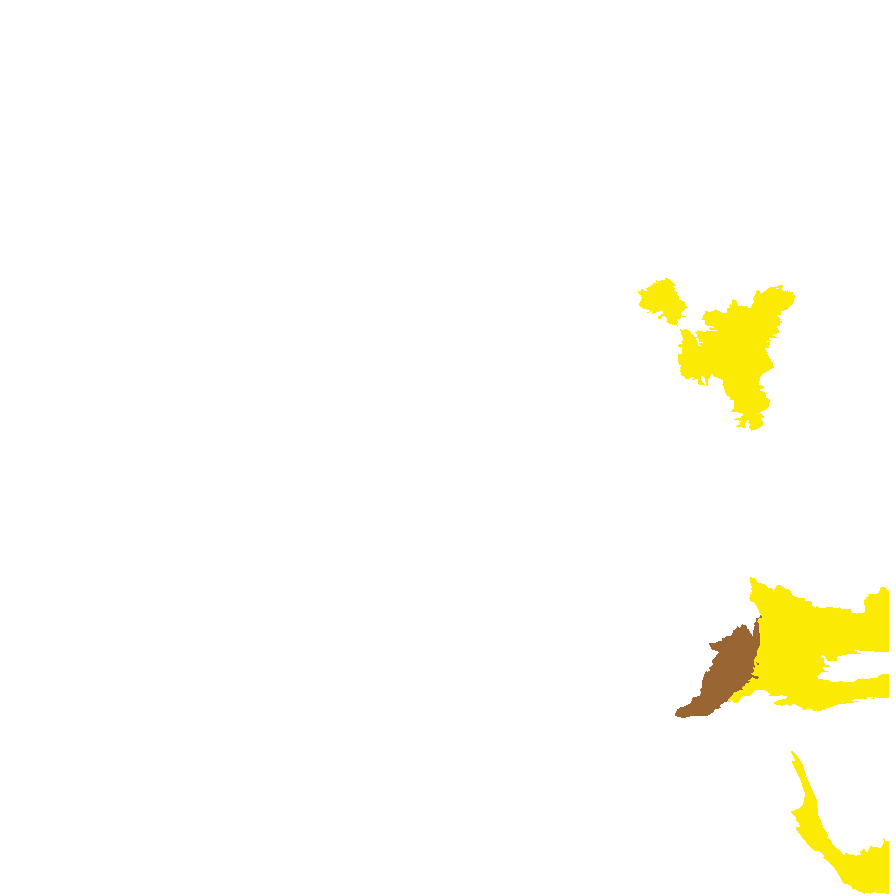
Botanical art
Prior names
Lythrum salicarium, orth.var.
Common names
Purple Loosestrife
Etymology
Lythrum, an ancient name used by Dioscorides from the Greek 'lythron', meaning black blood, referring to the purple colour of the flowers of some specie, but it has been suggested that it refers to some styptic property of the plant. Salicaria, from Latin meaning willow-like, referring to the similarity of the leaves to those of the willow.
Distribution and status
Found in the southern Mount Lofty Ranges, along the Murray River and in the lower South-east in South Australia, growing in moist places or near water, often in swamps or the edge of streams. Also found in Queensland, New South Wales, Victoria and Tasmania. Native. Rare in South Australia. Rare in Tasmania. Common in the other States.
Herbarium regions: Flinders Ranges, Murray, Southern Lofty, South Eastern, Green Adelaide
AVH map: SA distribution map (external link)
Plant description
Erect, rhizomatous, perennial herb to 1 m high. Leaves mostly opposite; sometimes in whorls of 3 or the upper ones alternate; narrowly ovate to oblong-lanceolate; sessile and slightly stem-clasping, to 7 cm long. Inflorescence, a terminal spike with clusters of up to 4 magenta flowers in the axils of leafy bracts; floral tube more or less cylindrical to 5 mm long and 2 mm wide. Flowering between November and March. Fruits are brown papery ovoid capsule, splitting by 2 valves. Seeds are pale brown ovoid seed to 0.9 mm long and 0.5 mm wide. Seed embryo type is spatulate.
Seed collection and propagation
Collect seeds between January and May. Collect mature capsules that are turning brown in colour and contain brown seeds. Whole stem containing many clusters of fruit can be collected. Place the capsules in a tray and leave to dry for two weeks. Then rub the capsules gently by hand to dislodge the seeds. Use a sieve to separate the unwanted material. Be very careful as the seeds are very small. Store the seeds with a desiccant such as dried silica beads or dry rice, in an air tight container in a cool and dry place. Seeds are non-dormant, viable seed should germinate readily.
1. Germination 100% on 1% w/v agar, 16/8 dark/light, 10C/20C. 2. Germination 100% on 1% w/v agar, 16/8 dark/light, 20C/35C. See http://data.kew.org/sid
| Location | No. of seeds (weight grams) | Number of plants | Date collected | Collection number Collection location | Date stored | % Viability | Storage temperature |
|---|---|---|---|---|---|---|---|
| BGA | 137,000 (7.41 g) | 12 | 26-Mar-2012 | DJD2340 Murray | 1-Nov-2012 | 90% | +5°C, -18°C |
| BGA | 16,200 (1.12 g) | 1 | 18-May-2011 | KHB587 Southern Lofty | 28-Jun-2021 | 90% | -18°C |
Number of plants: This is the number of plants from which the seeds were collected.
Collection location: The Herbarium of South Australia's region name.
% Viability: Percentage of filled healthy seeds determined by a cut test or x-ray.